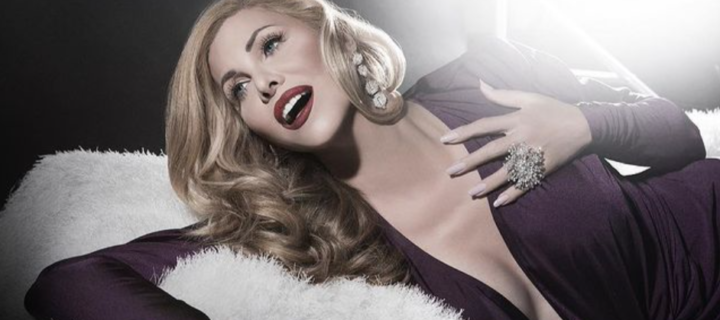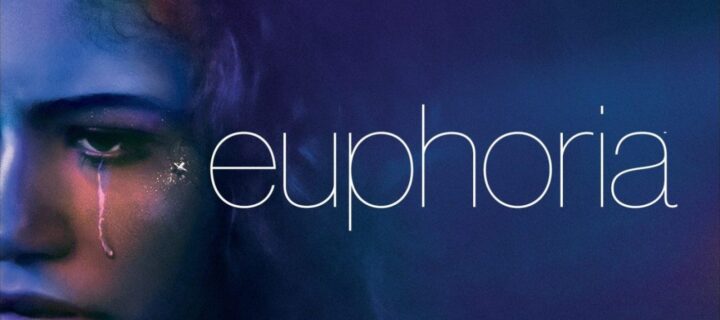
Top Five Transgender Anime Characters from the ‘90s
Growing up transgender in the late 80s to late 90s, it was quite difficult to find the right kind of positive media representation that made one proud, or at least comfortable about being trans. In a world saturated with Western media, trans-representation can be a rare thing.
Unfortunately, if and when it does happen, we are often left with negative tropes that portray transgender people – and especially transgender women – as being ‘impostors’ or ‘traps’. But long before Sense8’s Nomi Marks (played by trans actress Jamie Clayton) and Orange Is The New Black’s Sophia Burset (played by trans actress Laverne Cox), Japan was already promoting trans representation, mostly through transgender anime characters via the medium of manga and anime.
In Japanese media, most especially in anime, the notion of genderbending is a trope that has existed since the 1960s and even earlier. Japan has a long history of trans, gender-bending, androgynous, and homosexual representation in their folklore, a lot of which would later influence tropes found in their manga and anime.
While one or two trans characters in this list will belong to a sort of ‘grey-area’ with respect to their trans status, they nevertheless showcase personality traits and / or notable transgender ideations that make them a representative of the transgender experience through the lens of a transgender audience. We’ll keep the spoilers to a minimum (if it can be helped). We’ll kick off the list with:
1) Nuriko (Fushigi Yuugi franchise & Yukiyasha Den light novel)

(Nuriko in her default outfit)
Perhaps one of the earliest trans characters any anime fan from the 90s will get to know, Nuriko (born Cho Ryuen / Tiao Liujuan) is the third of the Seven Celestial Warriors of Suzaku, having the power of superhuman strength. Depicted as an attractive purple-haired courtesan with golden eyes, she is first introduced under the name Korin, as a potential romantic rival to the protagonist Miaka. It is revealed in episode five that Nuriko is male-bodied.
It is later explained that she takes on female dress and mannerisms in memory of her departed sister, but also because she was in love with another Suzaku Warrior – the Emperor Hotohori. There is long-standing debate over whether or not Nuriko really is trans, but sentiments like ‘I became a woman for love…’ and ‘I may have been born a man, but my heart and soul is that of a woman…’ can be taken as confirmation enough. In the near end of the series, Nuriko also reveals hidden feelings for Miaka, making her bisexual.
2) Ruka Urushibara (Steins;Gate franchise)
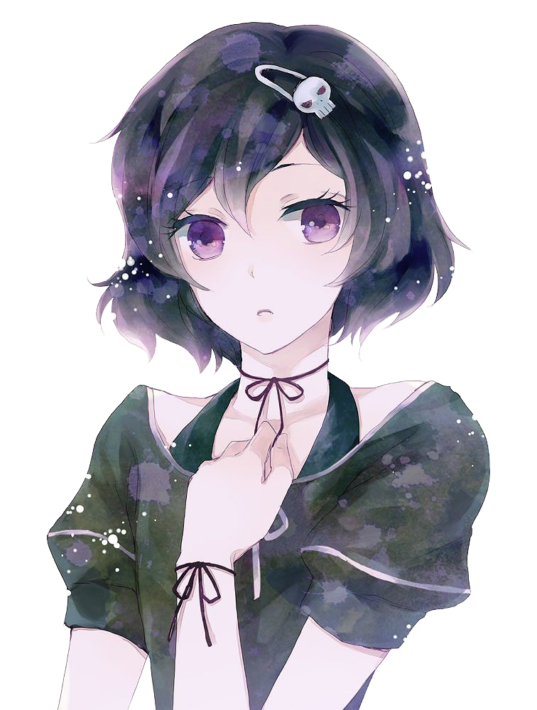
(Ruka in her shrine-maiden robes, before she meets Rintaro Okabe for the first time)
Ruka (sometimes spelled ‘Luka’) Urushibara is a short-haired, shy, and very demure shrine maiden with stunning lilac-hued eyes and a svelte body-type. She, however, is male-bodied, much to the confusion, shock and attraction (or a mix of all of these feelings simultaneously) of people who first get to know her. The main protagonist of the series, Rintaro Okabe, once remarked how Ruka was ‘more girly than any girl, more feminine than any female.’ In most ‘world lines’ (that is, alternative timelines), Ruka is male-bodied, there exists a world line where she is cis-female and married to Okabe, with who she has a child together with.
This alternative world line Ruka unfortunately has to sacrifice her biological femininity however, when Okabe is forced to ‘reset’ the timelines in an attempt to reverse the accidental death of a mutual friend of theirs. But whether a trans character or a cis-female character, in whatever timeline she may be, Ruka is seen as, and treated as, the woman she really is by her friends at the Future Gadget Lab, and most especially by her beloved Okabe (once he gets over his transphobia, that is…).
3) Motoko Kusanagi (Ghost in the Shell franchise)
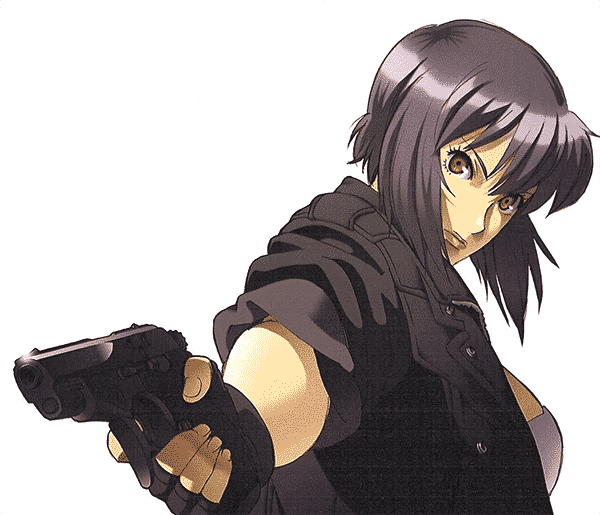
(Major Motoko Kusanagi, aka ‘Daddy’)
Almost everyone has heard of the Ghost in the Shell franchise, most especially since a live-action ‘adaptation’ was recently done which starred veteran actress Scarlett Johansson in the titular role of the badass Major Motoko Kusanagi. Depicted as a cyborg with a stereotypically female ‘shell’, Major Kusanagi’s sexuality and gender identity has caused much discussion and debate over the years. However, both manga and 1995 OVAs have made her transgender (and beyond that, her transhuman) identity evident.
It has been pointed out in both the 1995 anime adaptation and in Ghost in the Shell: Standalone Complex that the Major was male-bodied before her consciousness was transferred to a female-looking cyborg shell to better ‘fit’ her own choice of appearance. The series is rife with references to Major Kusanagi’s s*xlessness, showcased in her lack of a vagina and underdeveloped breasts, or in the repetitive references to her incapacity to bear children or menstruate, or to the fact that she has no actual s*xual organs to ‘use’ for s*x in spite of her being outwardly and openly lesbian in the manga. Later in the 1995 film, Major Kusanagi fuses with a sentient computer virus that allows her to project her consciousness ‘throughout the Internet’.
This virus – Project 2501 – is a male-voiced A. I. housed in a mangled female ‘shell’ mannequin, creating a parallel between female-bodied male-minded Kusanagi, and male-minded female-bodied sentient virus – making their fusion the catalyst for ‘wholeness’. If you’re into existentialist philosophizing and want just the right transgender character to fit the bill, knock yourself out with Ghost in the Shell.
4) Aoi Futaba (You’re Under Arrest)
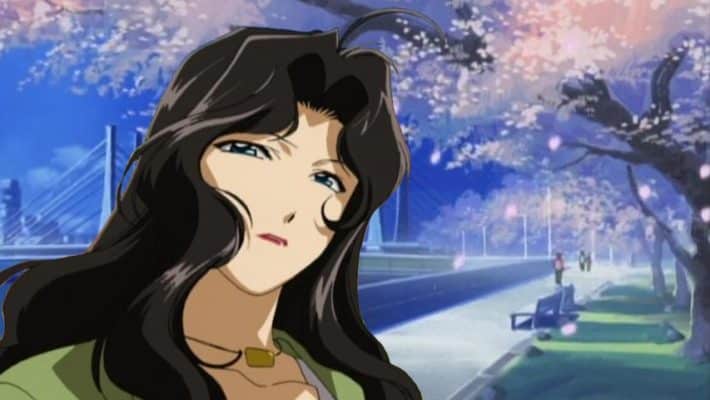
(The stunning Aoi Futaba)
You’re Under Arrest (Taiho Shichauzo) was a long-running seinen manga and later anime series (and movie franchise) featuring the lives and escapades of Miyuki Kobayakawa and Natsumi Tsujimoto – two female police-officers-slash-best-friends-for-life along with the rest of the staff of the fictional Bokuto Police Station. But beyond being one of the most popular series of the early 90s, it was also the first to represent a transgender character in a completely positive light stripped of any of standard ‘man-in-a-dress’ tropes common in serials and drama of the time. Enter Aoi Futaba, a drop-dead gorgeous auburn-haired green-eyed transferee to the Bokuto Station.
Initially depicted as an elegant lady who gives off ‘rich girl’ vibes, the staff later find out that she’s transgender when the women chance upon her in the changing-room and notice that she’s wearing boy-shorts and breast form enhancers. Hilarity ensues and the women request that she be moved to the men’s changing room, which likewise results in visible discomfort for the men – but even more discomfort for Aoi herself. They later find out that she used to be part of an anti-chikan (train pervert) sting operation and was required to cross-dress as part of her mission. This later made her realize that she was trans, and in the words of her superior officer, she ‘went native’.
The women of Bokuto Police Station would later accept her as one of their own – no questions asked – when it was made evident that she was ‘all woman’ to the core. She wasn’t just a token character either, because she played recurring roles throughout the entire Taiho Sichauzo franchise run, depicting in realistic detail the struggles of transwomen in the workplace and in daily life – an absolute first for an anime.
5) The Sailor Starlights (Bishoujo Senshi: Sailor Moon Sailor Stars)
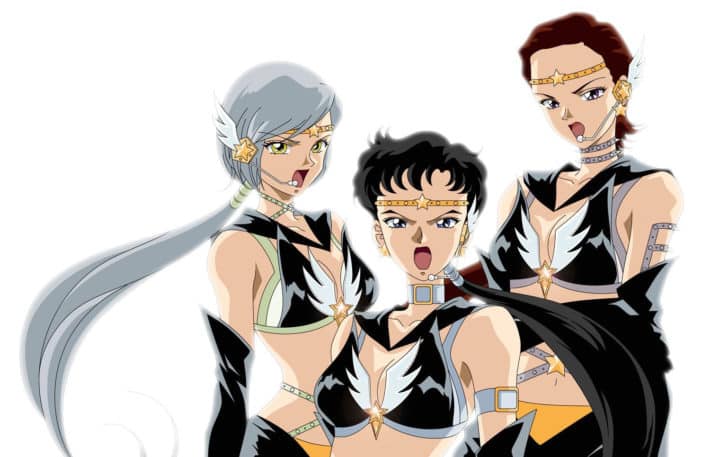
(Move over BTS, Three Lights has you beat)
In the fifth and penultimate season of the Sailor Moon franchise, we are introduced to the Sailor Starlights, comprising three Sailor senshi Sailor Star Maker (Taiki Kou), Sailor Star Fighter (Seiya Kou), and Sailor Star Healer (Yaten Kou). Originally female bishoujo (magical girl) warriors from the planet Kinmoku, they descend to earth in search of their princess Kakyuu, after the destruction of their home planet. While on earth, these women take on the guise of male siblings and form a boy band called ‘Three Lights’.
While in the manga they only crossdress as men, the 1996 – 1997 anime adaptation actually transforms them into men, and they can swap genders using their henshin (magical transformation) microphones. Although Sailor Moon’s mangaka Naoko Takeuchi did not originally intend for them to be women who transformed into men, the iconic anime series have made them lasting icons of transmale representation – something they are still known for to this day.
Did you like our list? Would like more transgender anime content? Stay tuned! We have more trans representation in anime and pop culture still to come!
